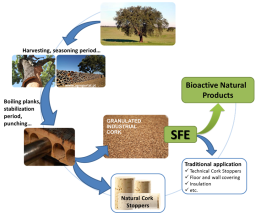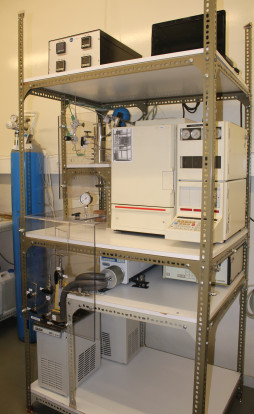Lignocellulosic Biorefinery
The main focus of this group is on lignin valorization; this research including lignin characterization and selection, oxidative reaction to produce monomeric high-added value phenolics, separation of products, and polyurethane preparation. In LA LSRE-LCM these research topics are addressed in the perspective of process development for production of both vanillin and syringaldehyde by oxidative depolymerization of lignin coming from side-streams of biorefineries. The separation of vanillin and/or syringaldehyde from the lignin oxidation mixture is achieved by membrane separation and ion exchange/ adsorption processes. It is also proposed the use of the oxidized lignin fraction(s) with higher molecular weight (retentate in membrane separation process) to be directed to a synthesis route for lignin-based polyurethane elastomers and foams. The aim is the complete valorization of lignin within the scope of the integrated process concept.
Lignin Oxidation
One of the most well-known lignin applications is the production of simple phenolic chemicals with high-added value, as vanillin and syringaldehyde. Lignin oxidation studies for the production of vanillin and syringaldehyde are performed in batch or continuous processes in LA LSRE-LCM laboratorial set-ups, using O2 and N2 mimicking air composition. The effect of reaction conditions such as temperature, lignin concentration, oxygen partial pressure, and alkali concentration was evaluated in order to achieve the best conditions to reach the maximum yields of phenolic monomers. Lignin chemical structure also plays an important role on the oxidation products type and yield. LA LSRE-LCM research on lignin structure aims to understand the structure/properties correlation and, finally, to screen lignins with higher potential for aldehydes production. The main structural features related with the ability to produce phenolic aldehydes of each lignin are discussed in a comparative approach, using radar classification, in view of selecting the lignins/processes to a valorization route within a lignocellulosic-based biorefinery.
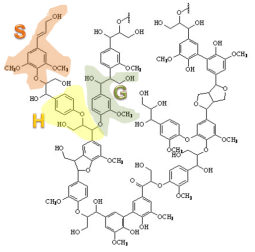
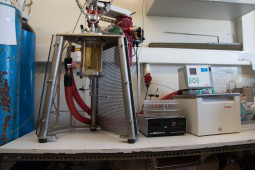
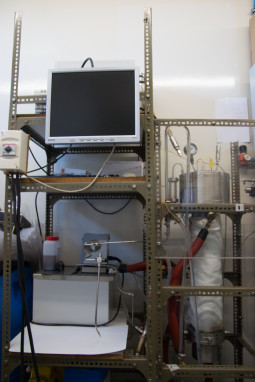
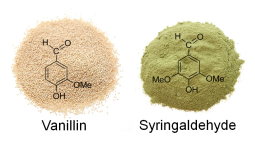
Fractionation and Purification of Syringaldehyde and Vanillin
The separation studies of vanillin/syringaldehyde from the lignin oxidation mixture include a membrane separation process and its recovery by ion exchange/adsorption processes. The aim of the membrane separation process is to obtain a stream (permeate) mainly composed by the monomeric compounds from the reaction mixture, including vanillin/syringaldehyde. Feed flowrate, transmembrane pressure, type of membrane (flat sheet or tubular), membrane composition (ceramic or polymeric), membrane cut-off (ultrafiltration or nanofiltration), feed solution composition and temperature, are some of the variables evaluated in the performance of the separation process regarding rejection coefficients and flux decline. Polymeric adsorbents have great adsorptive capability for vanillin and syringaldehyde with the noteworthy advantage of concentrating these compounds by eluting with an ethanolic solvent and hence facilitating further purification steps.
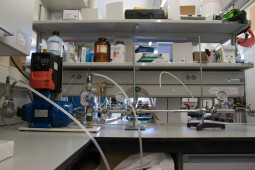
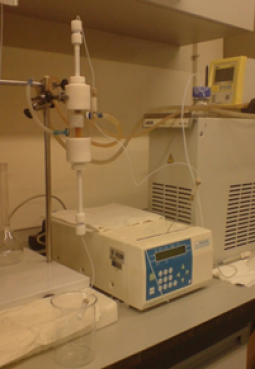
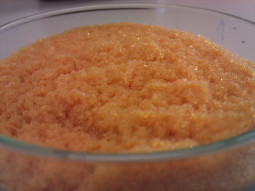
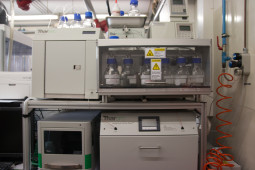
Cork Valorisation
Cork corresponds to the bark of the cork oak (Quercus Suber L.). It is an exceptional material that conceals high-value products. This research area aims at developing a sustainable and clean process, completely integrated in the traditional industrial cork facilities, to use the granulated cork as a source of bioactive compounds with promising applications (as friedelin, cerine, betulinic acid, betulin, etc.); this new process could constitute a push-forward for the cork industry, expanding its products and markets. Several samples of granulated industrial cork and cork powder were extracted using two different technologies, soxhlet that constitute a benchmark extraction process and supercritical fluid extraction (SFE) using CO2 with and without co-solvent. The results obtained by the research team show that it is possible to add a new value to cork. At the moment, the work is focused in optimizing the process in order to increase the yields using green solvents.
